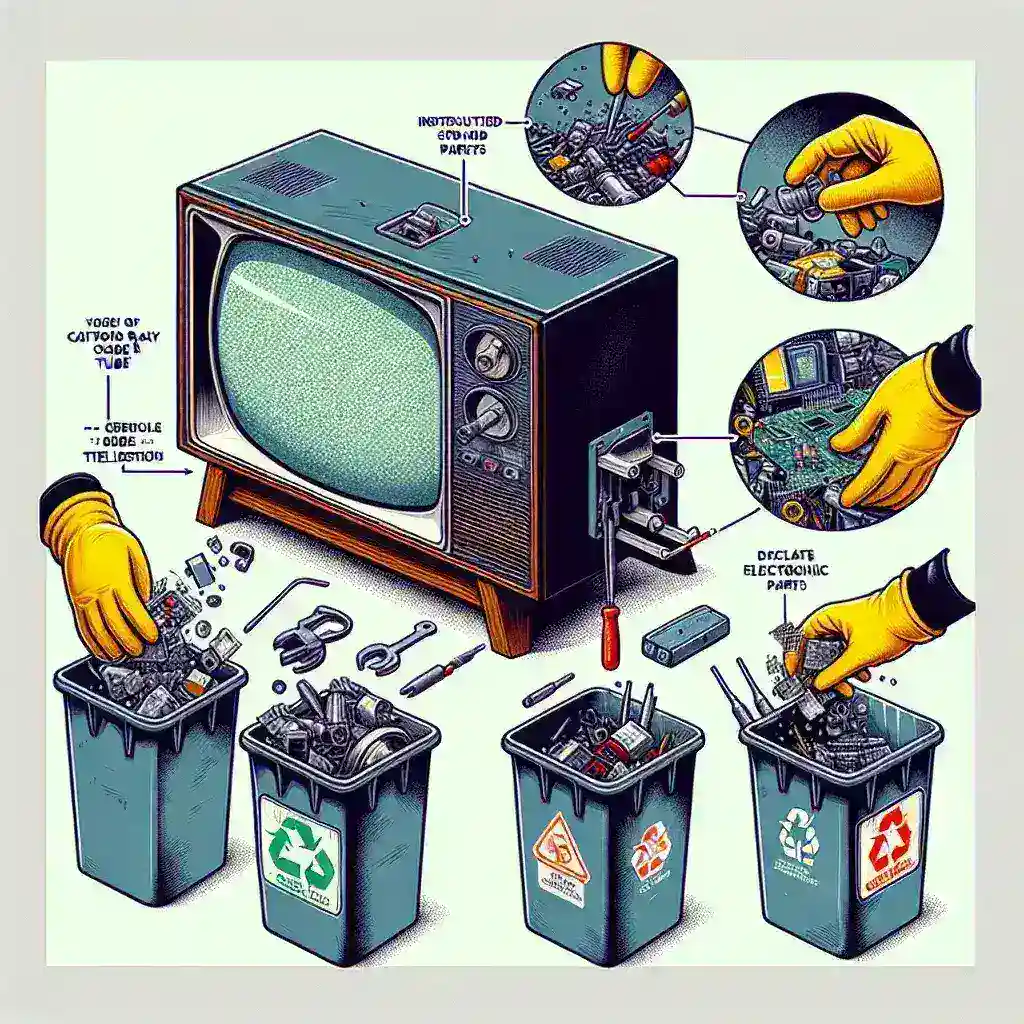With the rapid advancement of technology, CRT (Cathode Ray Tube) monitors and televisions have become largely obsolete. The disposal of these bulky and outdated devices poses a significant concern as they contain hazardous materials such as lead, phosphor, and other toxic substances. To ensure both safety and environmental health, it is crucial to dispose of CRTs properly. This article provides detailed guidance on how to safely and responsibly get rid of CRT devices.
Why Safe Disposal of CRTs is Important
CRTs contain lead and other hazardous substances that can pose serious health risks and environmental damage if not disposed of correctly. Here’s a summary of the critical components found in CRTs that require careful disposal:
| Hazardous Material | Impact |
|---|---|
| Lead | Neurotoxin, can lead to developmental issues in children |
| Phosphor | Contains potentially harmful chemicals |
| Glass | Can cause physical injury if broken |
Given these risks, safely disposing of CRTs is essential for protecting both public health and the environment.
Methods for Safely Disposing of CRTs
Recycling Programs
One of the most effective ways to dispose of CRTs is by taking advantage of recycling programs. Many local municipalities and electronic retailers have CRT recycling facilities that comply with environmental laws and regulations. Check with your local waste management authorities or visit online resources to find a recycling program near you.
Donations
If your CRT monitor or television is still in working condition, consider donating it to schools, community centers, or charitable organizations. Many of these entities may still find use for these devices, thereby extending their lifecycle and reducing landfill waste.
E-Waste Collection Events
Many communities host e-waste collection events specifically for the disposal of electronic devices, including CRTs. These events are often organized in collaboration with environmental organizations and provide a safe and convenient way to dispose of CRTs. Keep an eye on your local community bulletin boards or online for upcoming e-waste collection events.
Manufacturer Take-Back Programs
Several electronics manufacturers offer take-back programs to help consumers dispose of old devices safely. Companies like Dell, HP, and Best Buy have programs that allow you to return your CRT at no cost. Contact the manufacturer of your CRT device to see if they offer a take-back program.
Specialized E-Waste Disposal Services
There are specialized e-waste disposal companies that offer pick-up and drop-off services for outdated electronics, including CRTs. These companies are certified to handle hazardous materials and will ensure that your CRT is dismantled and recycled in an environmentally responsible manner.
Important Precautions to Take
When preparing your CRT for disposal, there are several precautions you should take:
- Handle with Care: CRTs are fragile and can shatter easily, releasing hazardous materials. Always handle them gently and avoid dropping or knocking them over.
- Wear Protective Gear: When moving CRTs, wear gloves and long sleeves to protect yourself from potential cuts or contact with any hazardous materials.
- Keep Children and Pets Away: Ensure that children and pets are not present when moving or disposing of CRTs to prevent any accidental injury or exposure to toxic materials.
- Do Not Throw in Regular Trash: Never dispose of CRTs in general household waste, as this is illegal in many areas and poses significant health and environmental risks.
What Happens If CRTs Are Not Disposed of Properly
Improper disposal of CRTs can lead to several adverse outcomes:
- Environmental Pollution: The release of lead and other hazardous substances into landfills can contaminate soil and groundwater.
- Health Risks:
- Legal Consequences: Many regions have laws and regulations in place for the disposal of electronic waste. Failing to comply can result in substantial fines and legal action.
Local Regulations on CRT Disposal
To ensure compliance with local regulations, you should familiarize yourself with the laws regarding electronic waste (e-waste) disposal in your area. Many states and municipalities have specific guidelines and programs for CRT disposal. Consulting your local waste management authority will provide the most accurate and up-to-date information.
Conclusion
Safely disposing of CRTs is not just a matter of convenience but a critical responsibility for protecting human health and the environment. Utilizing recycling programs, considering donations, participating in e-waste collection events, and adhering to local regulations are all effective ways to ensure that CRTs are disposed of properly. By taking these steps, you contribute to reducing hazardous waste and promoting a healthier, safer planet.

